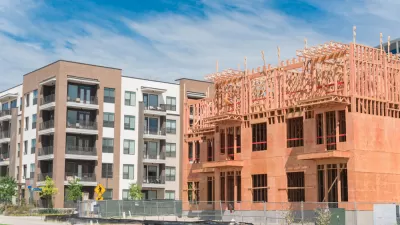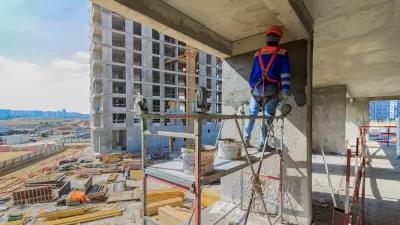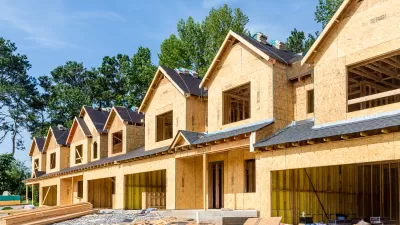New research sheds new light on one of the most hotly debated questions in planning and development.

A new research paper from a trio of Finnish economists provides empirical evidence on the effects of new development's effect on housing costs. An article by Timothy B. Lee shares insights into the findings and methodology of the study.
Regarding the methodology:
The Finnish government has a population register that collects data about where individuals live. The researchers got access to this data and were able to follow individuals as they moved from place to place in the Helsinki metro area. This data allowed them to trace exactly how the construction of new luxury apartment buildings in high-end neighborhoods impacted the broader housing market.
Regarding the findings, the research finds that the process of filtering can start with high-end development in wealthier neighborhoods and end with cost savings in low-income neighborhoods.
Here is how Lee defines and describes filtering:
When a new apartment comes on the market, it starts a chain reaction. Often, the person who rents the new apartment is moving out of an old apartment in the same metropolitan area. That creates a vacancy that can be filled by another renter. That person, in turn, may be vacating a third apartment. These “moving chains” can extend for six or more steps, with Helsinki residents playing a game of musical chairs to find better or cheaper housing options.
As for the findings:
“For each 100 new, centrally located market-rate units, roughly 60 units are created in the bottom half of neighborhood income distribution through vacancies,” the researchers write. "Even more remarkable, 29 vacancies are created in neighborhoods in the bottom quintile of the income distribution."
While this newest entry into the effects of new development in the Helsinki market, research in other parts of the world, and specifically in the United States, have yet to resolve the debate about the price effects of housing development. Lee also cites the latest research on examples in the United States, published in July 2021 by Notre Dame economist Evan Mast.
Mast found that 67 percent of people who moved into a new luxury apartment building came from another apartment in the same metropolitan area. Of these, only 20 percent of the people who moved into luxury apartment buildings came directly from neighborhoods with below-average incomes. But that set off a moving chain that was more likely to reach lower-income neighborhoods. By the sixth link in the chain, 40 percent of movers were coming from neighborhoods with below-average incomes.
Planetizen also picked up news of Mast's work in 2019 and May 2021. At the close of 2020, German researchers published evidence of similar effects as those discovered in Helsinki. In February 2021, researchers at UCLA gathered all of the recent research on the effect of market-rate development into one white paper, finding uneven results depending on the market.
FULL STORY: How luxury apartment buildings help low-income renters

Maui's Vacation Rental Debate Turns Ugly
Verbal attacks, misinformation campaigns and fistfights plague a high-stakes debate to convert thousands of vacation rentals into long-term housing.

Planetizen Federal Action Tracker
A weekly monitor of how Trump’s orders and actions are impacting planners and planning in America.

In Urban Planning, AI Prompting Could be the New Design Thinking
Creativity has long been key to great urban design. What if we see AI as our new creative partner?

King County Supportive Housing Program Offers Hope for Unhoused Residents
The county is taking a ‘Housing First’ approach that prioritizes getting people into housing, then offering wraparound supportive services.

Researchers Use AI to Get Clearer Picture of US Housing
Analysts are using artificial intelligence to supercharge their research by allowing them to comb through data faster. Though these AI tools can be error prone, they save time and housing researchers are optimistic about the future.

Making Shared Micromobility More Inclusive
Cities and shared mobility system operators can do more to include people with disabilities in planning and operations, per a new report.
Urban Design for Planners 1: Software Tools
This six-course series explores essential urban design concepts using open source software and equips planners with the tools they need to participate fully in the urban design process.
Planning for Universal Design
Learn the tools for implementing Universal Design in planning regulations.
planning NEXT
Appalachian Highlands Housing Partners
Mpact (founded as Rail~Volution)
City of Camden Redevelopment Agency
City of Astoria
City of Portland
City of Laramie





























